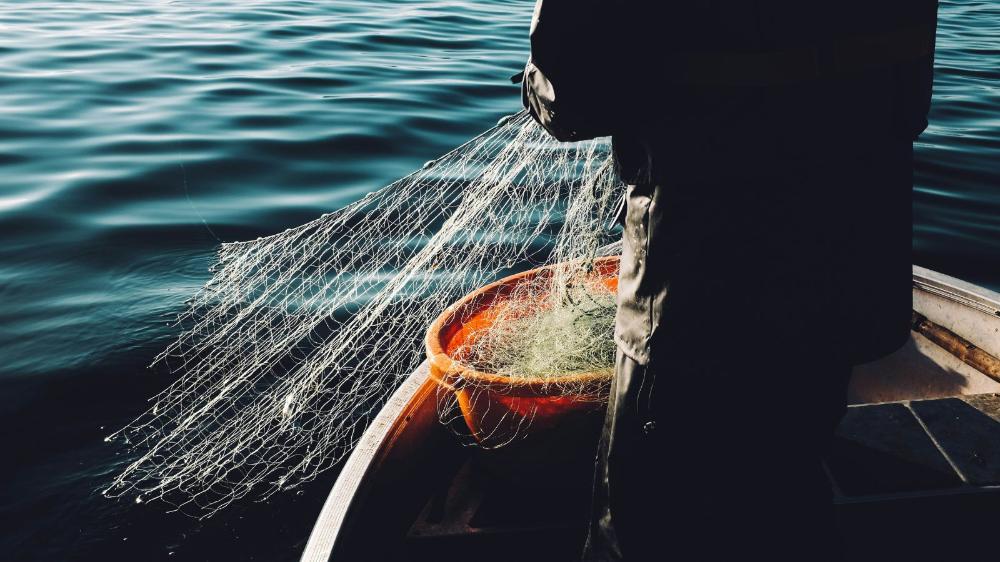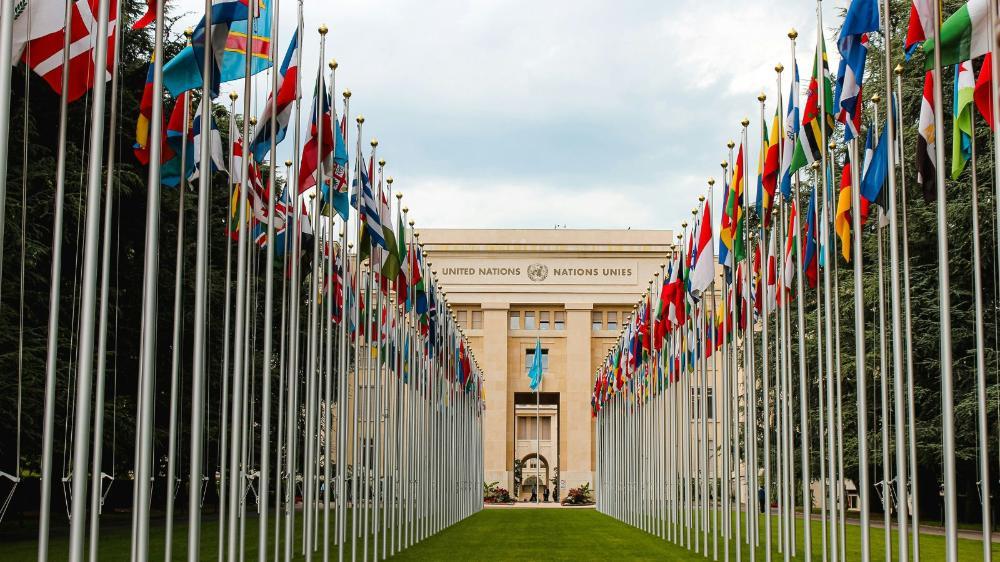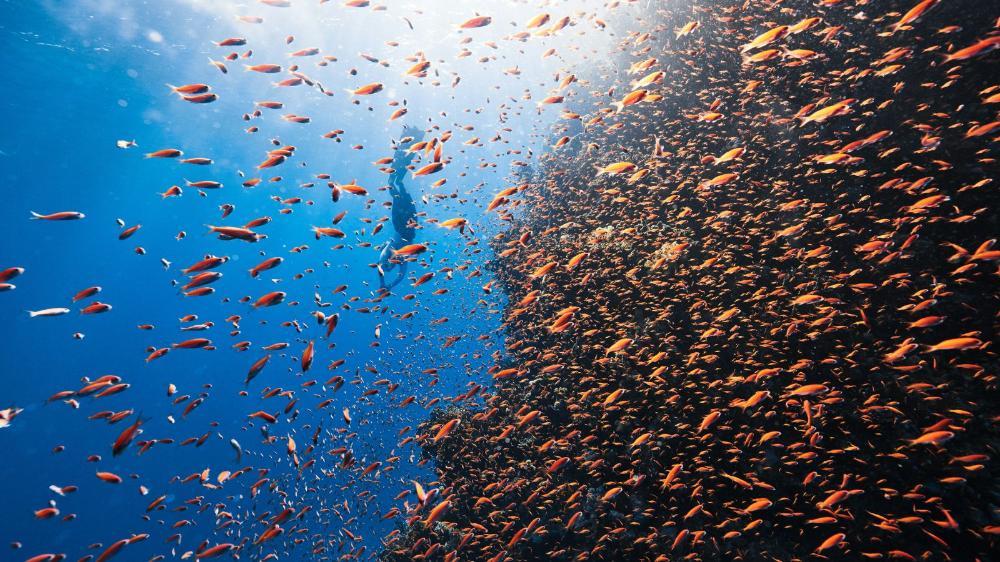Navigating troubled waters
Why the BBNJ Agreement marks a critical turning point for ocean protection
April 5, 2024
The BBNJ Agreement, also known as the High Seas Treaty, is a pivotal turning point in the protection of our deep ocean environment. Here's what you need to know.
A sea of troubles
The global ocean faces multiple and complex new challenges. One of the most pressing issues is the long-term protection of marine biodiversity, which is under threat from a range of pressures and being lost at a rate that jeopardises the sustainability of marine ecosystems. A failure to address these threats could have irreversible and potentially devastating effects and could compromise the ocean’s capacity to provide key ecosystem services that deliver both societal and economic benefits.
Marine areas beyond national jurisdiction
Scientific and technological advancements coupled with an increasing demand for raw materials and a depletion in terrestrial and coastal resources, has increased interest in marine areas beyond national jurisdiction, comprising the high seas and the international seabed area. These marine areas cover over 60 per cent of our ocean and are one of Earth’s largest biodiversity reservoirs, home to a rich and diverse web of life.
The harsh reality of the Anthropocene ocean
Due to their remote nature, marine areas beyond national jurisdiction were long considered protected from human impact. However, only 13 per cent of the ocean is now classified as marine wilderness, completely free from human disturbance. The reality of the Anthropocene Ocean has led to a decline in the health of the marine environment generally, and particularly in areas beyond national jurisdiction, which face an ever-increasing list of activities and stressors, with untold consequences for marine life.
To highlight a few examples. According to the UN’s Food and Agriculture Organization (FAO) over a third (35.4 per cent) of fish stocks have been fished beyond sustainable limits. As conventional fisheries collapse, deep-sea fish stocks will inevitably face higher levels of exploitation.

Deep-sea fish stocks will inevitably face higher levels of exploitation as conventional fisheries collapse. Photo: Fredrik Öhlander, Unsplash
Growing interest in exploiting deep-sea mineral resources also poses a threat. The International Seabed Authority has entered into contracts with companies to explore minerals on the ocean floor, but the long-term environmental impacts of seabed mining are difficult to predict. Another concern is marine litter with approximately 1.7 million tons of plastic entering the oceans annually.
In addition to the traditional maritime uses of shipping and fishing, emerging ocean industries, such as the bioprospecting of marine genetic resources and ocean fertilisation, just to name a few, present individual and cumulative threats to marine biodiversity. To compound the situation, the oceans are facing a catalogue of stressors, most notably from the effects of climate change, with ocean warming, acidification and de-oxygenation posing a significant challenge to the resilience of marine ecosystems.
A turning point in the protection of our deep ocean environment
Recognising that the existing international law framework provided inadequate protection for marine biodiversity against this growing list of threats, the international community set about negotiating a new legally binding instrument to better protect and manage the marine environment (including its ecosystems and resources) in areas beyond national jurisdiction.
After two decades of negotiation, on 19 June 2023, member States of the UN adopted the Agreement under the United Nations Convention on the Law of the Sea on the Conservation and Sustainable Use of Marine Biological Diversity of Areas Beyond National Jurisdiction, otherwise known as the BBNJ Agreement. This instrument signifies a pivotal turning point in the protection of our deep ocean environment and provides an armoury of conservation tools, strategies and mechanisms.

It took almost 20 years of negotiation to reach the BBNJ Agreement. Photo: Mathias Reding, Unsplash
An armoury of conservation tools, strategies and mechanisms
As the deep-sea remains the least known ecosystem on Earth, it represents an untapped source of new materials, compounds and organisms. Recently, the genomic diversity of the marine realm has attracted increasing scientific and commercial attention. However, under the existing international law framework, access to these resources beyond national jurisdiction has been entirely open and there has been no formal benefit-sharing mechanism in place. Consequently, States that lack the financial and technical resources to carry out deep-sea research would miss out on the benefits to be derived from the discovery of new species, genes and adaptations.
Under the BBNJ Agreement, States will be required to fairly and equitably share both monetary and non-monetary benefits arising from activities concerning marine genetic resources. These benefits will include facilitating access to and sharing samples and data with researchers from around the world.
The instrument also paves the way for the establishment of a comprehensive system of high seas marine protected areas. As only 1 per cent of the high seas currently fall under actively managed protected areas, the BBNJ Agreement is seen as a vital way of achieving ocean-related targets, including the 2030 Sustainable Development Agenda and the Kunming-Montreal Global Biodiversity Framework, which pledges to protect 30 per cent of marine habitats by 2030.
In addition, the BBNJ Agreement contains a clear set of rules and thresholds for conducting environmental impact assessments and provides a strong capacity-building framework including significant obligations regarding the transfer of technology to support State Parties, particularly developing States, in achieving the objectives of the Agreement.

It's essential that marine habitats are better protected. Photo: NEOM, Unsplash
Looking over the horizon
Although we have reached the finish line, in terms of finalizing an instrument, the real challenge will be getting States to sign on, ratify and abide by it. The BBNJ Agreement will enter into force once it is ratified by 60 States. One of the questions that looms large is how the new Agreement will interact with existing instruments, frameworks and bodies that already regulate and manage specific activities in marine areas beyond national jurisdiction, including Regional Fisheries Management Organisations, Antarctic governance bodies, the International Maritime Organisation and the International Seabed Authority.
ANCORS will host a BBNJ Workshop: Regime Interaction under the BBNJ Agreement at Innovation Campus from 7-10 May 2024. The Workshop has been organised in conjunction with four international organisations, the Centre for International Law (CIL) of the National University of Singapore, the Norwegian Centre for the Law of the Sea (NCLOS), the Korea Institute of Ocean Science and Technology (KIOST) and the Nippon Foundation – University of Edinburgh Ocean Voices Programme.
The Workshop will provide an important opportunity to bring leading academics, international lawyers, policymakers and scientists together in the same room to engage in productive and fruitful discussions on the BBNJ Agreement and its future legal implications.
Article by Dr Sarah Lothian (Senior Lecturer, ANCORS)